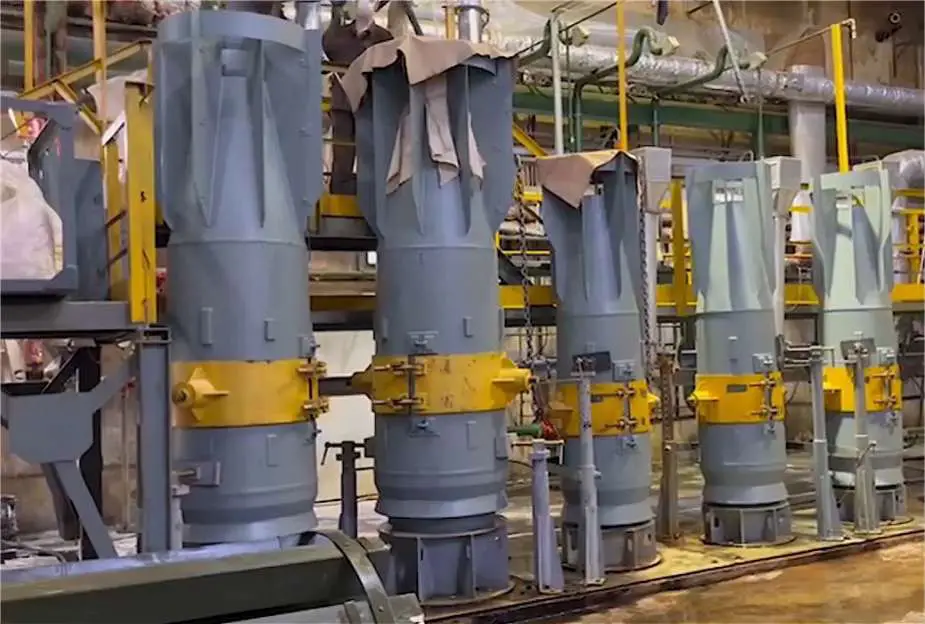Breaking news
Russia Launches Mass Production of FAB-3000 World's Most Destructive Bomb Amid Ukraine Conflict.
In a striking development amid ongoing military operations in Ukraine, Russia has commenced mass production of the FAB-3000, recognized as one of the most destructive aerial bombs globally. This pivotal advancement was announced by Russian Defense Minister General of the Army Sergei Shoigu during his visit to an aviation bomb production facility in the Nizhny Novgorod region on March 21, 2024. This initiative marks a critical expansion in Russia's military capabilities, particularly emphasizing its strategic implications for the war in Ukraine.
Follow Army Recognition on Google News at this link

Russia launches the mass production of its FAB-3000, considered one of the most destructive aerial bombs in the world. (Picture source Russian MoD Video footage)
Russian Defense Minister, General Sergei Shoigu detailed an ambitious expansion in the production of aerial munitions, highlighting the FAB-3000's strategic importance. Alongside, production of the FAB-1500 will be doubled, and there will be a significant surge in the manufacture of FAB-500 bombs. The FAB-3000M-54, a newly developed super-heavy aerial bomb, is specifically designed for strategic use by the Tu-22M3 Heavy Bombers, emphasizing its pivotal role in the current conflict dynamics.
The minister shared impressive advancements in the facility's productivity, with a reported fivefold increase in aviation and artillery weapons production over the previous year. This leap in production efficiency is attributed to the revitalization and modernization of manufacturing capabilities, facilitated by the integration of state-of-the-art technology.
During his visit, Shoigu also reviewed the progress in artillery ammunition production for Hyacinth guns, with a new workshop under construction aimed at further boosting production capabilities.
The FAB-3000 is a testament to the engineering prowess of conventional munitions, weighing approximately 3,000 kg and carrying 1,400 kg of TNT. It features a maximum penetration capacity of 183 mm, an armor destruction radius of 42 m, and a fragment dispersion radius of 260 m. The "destruction radius" refers to the area within which the bomb can cause direct, significant damage to structures and personnel due to its blast and shockwave. The "fragment dispersion radius" denotes the wider area over which bomb fragments scatter, posing lethal risks to personnel and causing secondary damage.
Designed for strategic bombardment, the FAB-3000 is capable of inflicting extensive damage on enemy fortifications, key infrastructure, and troop concentrations. Its introduction into the arsenal emphasizes the scale of destruction such munitions can deliver, especially in densely populated or strategically vital areas. With the ongoing conflict in Ukraine, the deployment of such heavy munitions raises concerns over the humanitarian and infrastructural impact, underscoring the severe implications of intensified aerial bombardment campaigns.
This escalation in bomb production and the strategic emphasis on heavy munitions like the FAB-3000 reflect Russia's preparedness for prolonged and intensified military engagement, highlighting the crucial interplay between military capabilities and geopolitical strategies in the current conflict scenario.
Defense News March 2024



























